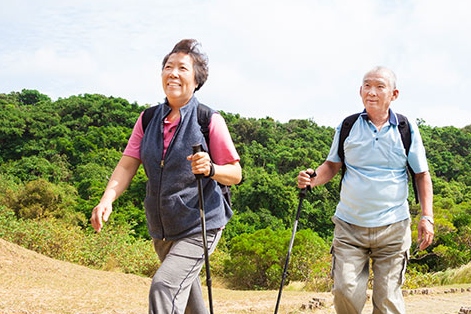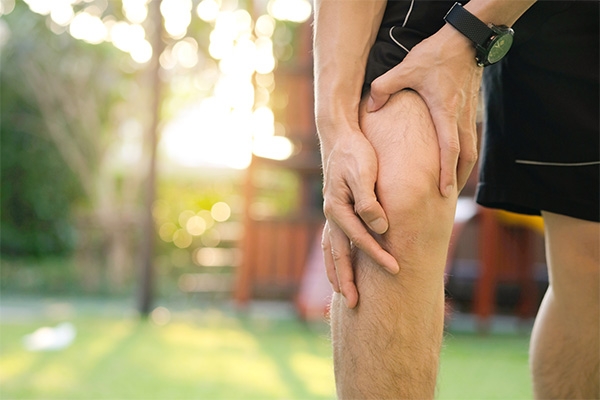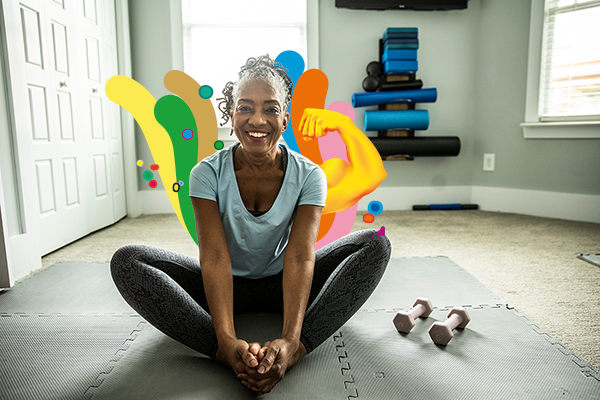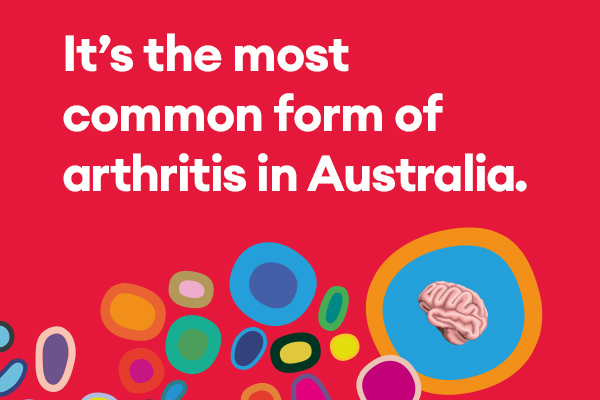Written by Medibank
July 2023
Osteoarthritis is the most common type of arthritis, affecting more than 2 million people in Australia.1 It can sometimes make daily activities challenging, but there’s a lot you can do to help manage your condition.

What is osteoarthritis?
Osteoarthritis is a common degenerative condition that affects the joints of the body. Where our bones meet, they’re protected by a layer of cartilage that stops them from coming into direct contact. Osteoarthritis causes that cartilage to gradually wear away, leaving our joints unprotected and creating friction between our bones.
Osteoarthritis symptoms
The main osteoarthritis symptoms are pain and stiffness in the joints. Symptoms tend to be worse in weight-bearing joints, so people with osteoarthritis often complain of hip and knee pain.
Other symptoms can include:
- a more limited range of movement
- muscle weakness
- joints making clicking or cracking sounds
- low mood.
Osteoarthritis symptoms can worsen over time, but they don’t always. If you are experiencing osteoarthritis pain, a healthcare professional can help you make a plan to manage your symptoms.
Osteoarthritis causes
There’s no specific cause of osteoarthritis, but there are factors that make developing it more likely. You’re at higher risk of osteoarthritis if you:
- are female
- are over 45
- have obesity
- have high bone density
- have had a previous significant joint injury
- have held a job that involved repetitive movement
- have relatives with osteoarthritis.
Diagnosis of osteoarthritis
A healthcare professional such as a general practitioner can usually diagnose osteoarthritis with a physical examination. Your doctor might order an X-ray to look for changes in your joint shape, but X-ray results don’t always correlate with physical symptoms – some people with severe joint damage don’t experience much pain, and some people with only mild damage have high pain levels.
If you’re experiencing hip or knee pain, it’s important to seek an official diagnosis, as these symptoms can be caused by a range of conditions and not just osteoarthritis.
Treatment of osteoarthritis
Osteoarthritis has no cure, but there’s a wide range of treatment options available. With help from your healthcare professional, you can develop a plan to manage your specific symptoms.
Common methods for treating osteoarthritis are:
- regular low-intensity exercise
- a balanced diet that helps you maintain a healthy body weight
- pain management.
Some patients also eventually need hip or knee replacement surgery.

Better Knee, Better Me
This 12-month program combines personalised plans for exercise, weight loss and pain management that aims to help eligible members better manage painful knee osteoarthritis and help reduce the impact it has on their quality of life. Clinical and product eligibility criteria apply.
Osteoarthritis pain management
Your healthcare professional can help you develop a plan to manage your osteoarthritis pain. This will likely involve a combination of strategies that involve medication as well as complementary tactics, such as using support devices, pacing and exercise.
Osteoarthritis aids and supports
The simplest way to manage hip and knee pain from osteoarthritis is to put less pressure on your hips and knees. You can achieve this with devices such as:
- walking sticks
- braces
- shoe insoles.
A physiotherapist or occupational therapist can help you determine which supports are right for you. If you have Medibank extras cover, you may be able to claim benefits for the consultation at eligible providers, depending on your level of cover.
Osteoarthritis pain medication
To manage osteoarthritis pain, your healthcare professional might prescribe you medication in tandem with other remedies. Common osteoarthritis pain medications are:
- anti-inflammatory medications such as ibuprofen
- pain-relief medications such as paracetamol
- anti-inflammatory ointments.
Less commonly, osteoarthritis pain can be managed with steroid injections.
Exercise for osteoarthritis pain
Exercise can help ease osteoarthritis pain, as well as helping maintain joint mobility and overall health. Get advice from your doctor or physiotherapist before you begin any exercise program so you can get started safely.
It’s important to choose a moderate, low-impact type of exercise, as strenuous exercise can damage your joints. Examples of this type of exercise include:
- walking
- swimming
- aqua aerobics
- tai chi.
Strength exercises can also help you improve your ability to do daily activities. Talk to your doctor or physiotherapist for more specific advice or to get a tailored exercise program.
Pacing
Pacing involves approaching activities in small, manageable steps, while staying aware of your pain thresholds. It can help you keep doing activities you love while avoiding flare-ups.
You can practice pacing by:
- breaking up activities into smaller chunks and taking breaks in between them
- giving yourself time to rest
- prioritising and planning your day so that you do the things that involve the most energy or effort when you’re at your most alert.
Read more about osteoarthritis
Looking for something else?
Visit Joint health for more information.
Things you need to know
1 Australian Institute of Health and Welfare, Chronic musculoskeletal conditions, retrieved 5 June 2023.
While we hope you find this information helpful, please note that it is general in nature. It is not health advice, and is not tailored to meet your individual health needs. You should always consult a trusted health professional before making decisions about your health care. While we have prepared the information carefully, we can’t guarantee that it is accurate, complete or up-to-date. And while we may mention goods or services provided by others, we aren’t specifically endorsing them and can’t accept responsibility for them. For these reasons we are unable to accept responsibility for any loss that may be sustained from acting on this information (subject to applicable consumer guarantees).




